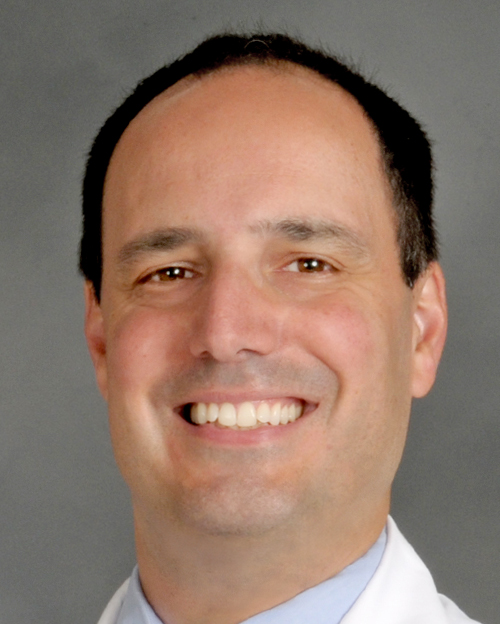 James Barsi, MD
James Barsi, MDClinical Associate Professor
Department of Orthopaedic Surgery
 James Barsi, MD
James Barsi, MDScoliosis is a sideways curve of the spine and back with scoliosis curves sometimes following an “S” or a “C” shape. Scoliosis typically occurs in adolescents between 10 and 18 years old and is relatively common, affecting as many as 2 to 3 percent of the population. Dr. James Barsi shares his expertise in scoliosis diagnosis and treatment.
How is scoliosis diagnosed?
A child’s back is screened for scoliosis by looking for asymmetry in the shoulders, ribs or hips when standing and bending over. This is done annually by your school nurse or primary care provider during the pre-adolescent and adolescent years. If asymmetry is noted, your provider will likely send you to a specialist for further evaluation. Curves are diagnosed on standard spine radiographs.
The Spine and Scoliosis Center at Stony Brook Orthopaedic Associates uses low dose EOS® imaging, which provides full-body 2D and 3D images. We are the only provider in Suffolk County to offer this low dose imaging.
What treatments are available for scoliosis?
When someone is diagnosed with scoliosis, I want to understand their risk of progression because that ultimately guides treatment. In general, curves below 25 degrees are considered mild curves and are typically observed and possibly prescribed physical therapy.
Curves between 25 and 50 degrees are more moderate in nature, and children with growth remaining would be prescribed a brace.
Curves greater than 50 degrees are considered severe and at that magnitude I begin having a conversation about surgical options. These are generalizations though, and every treatment plan is tailored for each specific patient.
When should patients consider a brace?
Braces are primarily used to prevent the curves from becoming more severe, but a study at Stony Brook found that 45 percent of children who wore their brace as prescribed, and followed their exercise program daily experienced a 5-degree improvement.
In adolescents with growth remaining, I would typically begin bracing for moderate curves, which are above 25 degrees. In patients younger than 10, I would consider bracing if the curvature was becoming more pronounced, or over 20 degrees.
Brace designs have become more manageable for children, and the recommended hours of usage is now shorter. When I trained, the regimen was 24 hours a day of brace wear, but now I recommend 16 hours per day of brace wear, as there is statistically and clinically no difference between 16 hours of brace wear and 24 hours of brace wear.
For some types of scoliosis, adolescents may be offered a night-time only brace.
What are the surgical options?
The gold standard in managing scoliosis from a surgical standpoint is spinal fusion, and the art and skill of the surgeon is to balance the surgical plan to address the unique nature of the curvature and the expectations of the patient.
New techniques such as growth modulation using spinal tethering are available for children with moderate curves who have significant growth remaining.
Can specific sports or activities have a negative impact on a spine with scoliosis?
Historically, children were advised to avoid exercises that would increase the flexibility of the spine such as gymnastics or tumbling. However, recent evidence shows no link between sport played and curve progression or development. So, currently, I tell patients they can play whatever sport they wish.
For an appointment with one of our orthopaedic experts call (631) 444-4233.